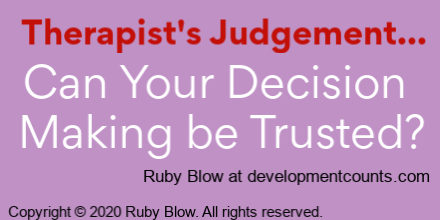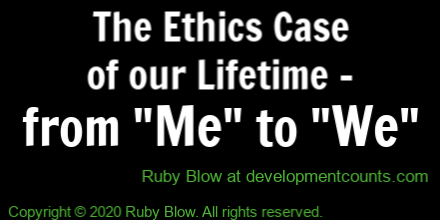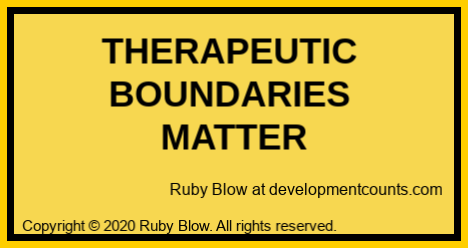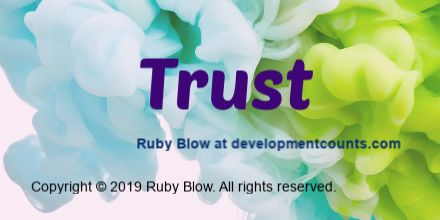What if We Told the Unvarnished Truth?
There is something about honesty that is both simple and complex. It is perhaps necessary and socially acceptable to not always share our genuine thoughts like:
- “I don’t like the gift you gave me.”
- “You look fat in those jeans.”
These are examples of the harm being very costly from telling the “truth.” Accepting a gift graciously is all about accepting the gift giver’s intent. Saying thank you can be an honest and sincere expression (behavior).
Reassuring someone that they look nice is about preserving someone’s esteem and seeing them as “whole” and worthwhile, regardless of their physical size and appearance, especially when their statement suggests that they feel otherwise.
Niceties & Insincerities
In these day-to-day “niceties,” we are abiding by a social contract. Those who can’t or don’t act within these social norms are often referred for social skills training, EAP counseling and various means to help them behave in the ways that society values.
So when these moments of acceptable “insincerities,” like saying “Thank you” when you want to say “No thanks” or saying “You look nice” when their appearance is not your preference occur, we abide by the social structure and tell an untruth. Otherwise, you can be disliked and even distrusted.
Why distrust; even if you are speaking a hurtful truth?
Because in that moment you are valuing intellect and logic over emotion (heart) and relationship.
At the same time we can not simply tell people what they want to hear to spare their feelings. In the long run the betrayal that comes with the realizations that you didn’t share your “truth” with them can cause more harm.
Because it means that you’ve kept secrets…the feeling of the aggrieved party is “I thought I knew you…but I don’t.” Often followed by embarrassment and shame – “I was vulnerable with you” and “You pretended…”
On Being Sincere and Honest
So we must learn to discern ways to remain sincere and to align our words with our thoughts and our intent. It takes more work. It could look like:
“I’m touched that you thought of me and got me a gift. To be honest…I don’t know quite what I would do with it and I respect you too much to allow this to go to waste.”
Ugh… right! The costs of this truth may be too high in comparison to the simplicity of preserving the relationship.
But if the topic is more important, for example a client or friend asking “Do you think the way I discipline my child goes too far?” Now we have a worthwhile and vitally important opportunity for sincerity and honesty.
Why?
Because the cost is so high. The importance of protecting a child is by far more important than sparing a person’s feelings and thus your relationship with them. After all, the emotional, psychological, physical, intellectual, relational and spiritual devastation of abuse is far more important than maintaining someone’s good favor.
Yet everyday we see, witness or participate in decisions like this…treating a question of abuse the same way we would a question about whether or not a person looks fat in their clothes.
Ethical Principles for Counselors
There is a reason why we have an order of consideration when it comes to ethical decision making.
- Client (Patient,Consumer, Student)
- Therapist (Counselor, Direct Care Provider)
- Supervisor (Director, Boss, Principal, Leader)
- Organization (Business, Private Practice, School, Counseling Center)
Too often, the fear of speaking truthfully, even in small ways like speaking up in a staff meeting, are avoided. Because we are valuing what feels like self preservation in the moment over the long term risks that can lead to the ruin of ethical practice, professional reputation, and possibly legal mandates…we know right from wrong.
Just this week I heard about a case where a counselor has been discouraged from calling 911 if a client (student, consumer, patient) has a seizure, falls and sustains a bleeding head injury.
In this case example, the legal guardians’ are being encouraged to agree to this plan of action in advance. The counselor in this case has to suppress their natural instincts and what they know to be moral and place their organization’s needs above the client (student, consumer, patient).
What are the organization’s needs? It’s unclear: to be free from the cost of the ambulance should a hospital visit be necessary and the guardians cannot afford (or refuse) to pay the cost…presumably suing the organization?
Moral Principles
We do have a set of moral principles to guide our counseling ethics (ACA Code of Ethics 2014). Fortunately, if we consider them…we can easily do the right thing by clients and reduce the liability risks associated with trying to protect organizations over people. When we do the right thing by the people we serve, we are protecting organizations in the long run.
Remember the moral principles:
- Non-maleficence – avoid actions that cause harm.
- Beneficence – work for the good of the individual and society by promoting mental health and well-being.
- Autonomy – fostering the right to control the direction of one’s life.
- Justice – treating individuals equability, fostering fairness and equality.
- Fidelity – honoring commitments and keeping promises, including fulfilling one’s responsibilities of trust in professional relationships.
- Veracity – dealing truthfully with individuals with whom counselors come into contact.
Right and Wrong
The true cost of insincerity when facing important dilemmas and questions is the very fabric of our connection with what is “right” and “wrong.” While right and wrong naturally have many vantage points; when it comes down to the harm of vulnerable children and vulnerable adults, it’s not that complicated. The complications come from not wanting to upset the status quo.
This past week I taught about “order, disorder and reorder,” in my workshop Reflective Practice in Clinical Supervision. We all move between equilibrium (order) and wanting things to remain the same; to the introduction of new information that creates chaos (disorder) or the need for change; and then integrating change itself (reorder).
According to our respective backgrounds and experiences we all have different “truths” from our differing perspectives which are unique to each person. Yet our profession demands some universal values. While we may not agree with all of them, the onus is on us to address the ways we diverge from ethical and best practices before we “unintentionally” cause harm.
Copyright © 2016 Ruby Blow. All rights reserved.
Share your thoughts on Linkedin, Facebook, Twitter





